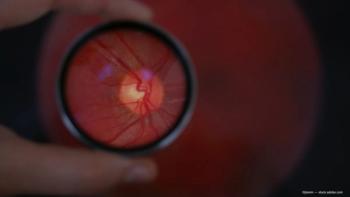
|Articles|May 1, 2003
Exposures of porous orbital implants can be avoided
In the past decade, porous orbital implants have become the implant of choice for many surgeons managing the anophthalmic socket after enucleation or evisceration. By permitting fibrovascular ingrowth, these porous implants are better able to resist infection, migration, and extrusion when compared with acrylic or silicone implants.
Advertisement
Newsletter
Don’t miss out—get Ophthalmology Times updates on the latest clinical advancements and expert interviews, straight to your inbox.
Advertisement
Latest CME
Advertisement
Advertisement
Trending on Ophthalmology Times - Clinical Insights for Eye Specialists
1
Seeing the difference: Multimodal imaging for AMD and GA
2
Unmet Needs in Dry Eye Disease
3
Malar edema: Perspectives from plastic surgery and ophthalmology
4
Spotlight on women's health: Understanding thyroid eye disease
5








































